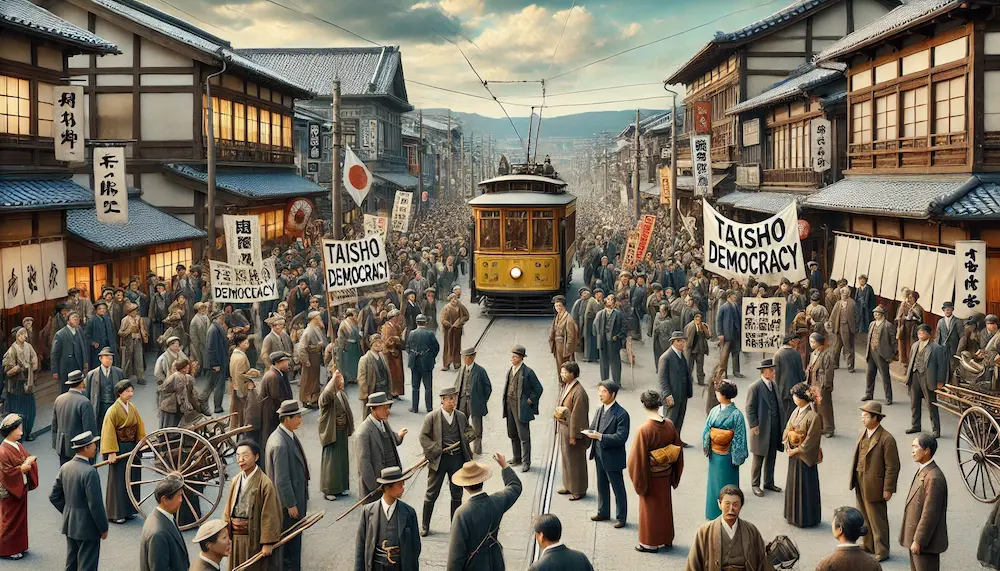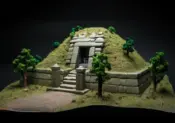Kyoto in the Taisho Era: A Flourishing of Modernity and Culture(1912-1926)
- 1. Introduction: Kyoto in the Taisho Era – A Time of Blossoming “Taisho Roman”
- 2. Taisho Democracy and Kyoto: A Spirit of Liberalism
- 3. Modernization of Kyoto: Industrial and Infrastructural Advancements
- 4. Taisho Culture: Art and Literature Flourishing in Kyoto
- 5. Kyoto’s Landscape in the Taisho Era: A Fusion of Tradition and Modernity
- 6. Conclusion: The Legacy of the Taisho Era in Kyoto
1. Introduction: Kyoto in the Taisho Era – A Time of Blossoming “Taisho Roman”
Step into the vibrant world of Taisho-era Kyoto (1912-1926), a time of exciting cultural shifts and rapid modernization. While the Meiji Restoration had set Japan on a path towards Westernization, the Taisho era saw a unique blend of the old and new, a cultural phenomenon known as “Taisho Roman.” In this article, we’ll delve into the political, economic, and cultural changes that shaped Kyoto during this dynamic period, and how the city managed to preserve its traditions while embracing modernity.
2. Taisho Democracy and Kyoto: A Spirit of Liberalism
The Taisho era was marked by a growing movement towards democracy and liberalism, known as Taisho Democracy. This spirit of openness and reform resonated deeply in Kyoto, a city with a long history of intellectual and cultural activity.
Kyoto became a hub for political discourse and activism, with lively debates on issues like freedom of speech, universal suffrage, and social reform. The city’s intellectual circles, centered around Kyoto Imperial University (now Kyoto University), played a crucial role in shaping public opinion and advocating for progressive policies.
3. Modernization of Kyoto: Industrial and Infrastructural Advancements
The Taisho era saw significant advancements in Kyoto’s infrastructure and industry. The opening of the Kyoto Municipal Tramway in 1912 revolutionized transportation, connecting different parts of the city and facilitating economic activity.
The Lake Biwa Canal, initially built in the Meiji era, continued to play a vital role in Kyoto’s development. It provided a reliable source of hydroelectric power, fueling the city’s growing industries, particularly textiles. Kyoto’s textile industry, known for its exquisite craftsmanship, experienced a boom during this period, contributing significantly to the city’s economy.
The rise of consumer culture also transformed Kyoto’s landscape. Department stores like Takashimaya and Daimaru opened their doors, offering a wide range of goods and attracting a growing clientele. Movie theaters also became popular, providing a new form of entertainment for the city’s residents.
4. Taisho Culture: Art and Literature Flourishing in Kyoto
Kyoto’s cultural scene thrived during the Taisho era, producing a wealth of artistic and literary talent. Artists like Takehisa Yumeji, known for his romantic illustrations of beautiful women, and novelists like Junichiro Tanizaki, who captured the essence of Kyoto’s traditional beauty in his works, found inspiration in the city’s unique atmosphere.
The literary magazine “Shirakaba” (White Birch), founded in 1910, played a crucial role in promoting new ideas and artistic expression. It fostered a vibrant intellectual community in Kyoto, with writers, artists, and intellectuals gathering in salons to discuss literature, art, and social issues.
Kyoto also witnessed a surge in artistic experimentation during the Taisho era. Traditional Japanese painting (nihonga) continued to evolve, while Western-style painting (yoga) gained popularity. Architects experimented with new styles, blending Western and Japanese elements to create unique buildings that reflected the changing times.
The rise of café culture added another dimension to Kyoto’s social scene. Cafés became popular meeting places for intellectuals, artists, and students, fostering a lively exchange of ideas and contributing to the city’s vibrant cultural atmosphere.
5. Kyoto’s Landscape in the Taisho Era: A Fusion of Tradition and Modernity
The Taisho era saw a gradual transformation of Kyoto’s landscape. The construction of Kyoto Station in 1914, a grand building with a mix of Western and Japanese architectural elements, symbolized the city’s modernization.
New public spaces like Maruyama Park and the Philosopher’s Path were created, offering residents and visitors alike a place to relax and enjoy nature. These parks became popular spots for leisurely strolls and contemplation, reflecting the changing lifestyle and values of the Taisho era.
Traditional festivals like the Gion Matsuri and Jidai Matsuri continued to be held, but they also underwent some changes to adapt to the modern era. For example, electric lights were introduced to illuminate the floats during the Gion Matsuri, adding a new dimension to the spectacle.
6. Conclusion: The Legacy of the Taisho Era in Kyoto
The Taisho era left an indelible mark on Kyoto. The city’s rapid modernization, coupled with its vibrant cultural scene and embrace of democratic ideals, created a unique atmosphere that continues to resonate today.
Kyoto’s Taisho period is a testament to the city’s ability to adapt and evolve while cherishing its traditions. It’s a reminder that progress and preservation can go hand in hand, creating a rich and dynamic cultural landscape that continues to inspire and enchant.









